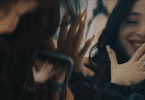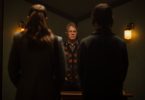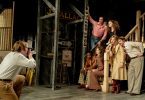Warfare is unlike most any other military combat movie in recent memory. Co-directed by Alex Garland (Civil War, Ex Machina, Annihilation) and Iraq War veteran Ray Mendoza, the film drops audiences in on a single mission Ray and his Navy SEAL platoon engaged in back in 2006. There is no setup, no backstory as to why they are sent on this mission. For 90 minutes, you are part of the platoon as a simple reconnaissance mission turns into a firefight for survival.
I sat down with co-director and co-writer Ray Mendoza and Kit Connor, who plays Navy SEAL Tommy in the film, to talk about their experience making Warfare. Mendoza discusses with me about how the process of bringing his memories to the silver screen was therapeutic, while Connor reveals his own process for helping tell Ray’s story to the best of his ability. Together, they and the rest of the cast and crew would create one of the most intense and realistic war films I have seen.
What made you want to adapt this particular mission? I’m sure you had quite the career in the military, so what made this one stand out?
Ray Medoza: Well, I wouldn’t look at it as an adaptation. It’s more of a re-creation. When Alex first proposed this, he wasn’t aware of the story. Coming off Civil War, I think he had an idea for a type of movie based off the firefight scenes we had in Civil War. He said, “I want to do almost like a second-by-second, a minute-by-minute window, and we can slide the window, but we’re not allowed to expand it or compress it.” And he’s like, “do you have some stories?” 20 year war? The amount of time I spent in the military? Tons of stories to tell that are worthy to tell. But it starts to get, not tricky, but you’re asking somebody to pull up some old feelings, so I think he had a hard time asking somebody to do that, and so I was like, “well, I’ll be the one to do that,” and so this is the story with Elliott Miller, played by Cosmo Jarvis, was something I’ve always wanted to do, not just for me for therapy, but mainly for Elliott to have a visual representation of what happened. That was kind of the planting of the seed, so to speak.
Creating this film from memories, from these interviews with your fellow platoon soldiers, you mentioned it being therapeutic. Did going through all those emotions while making this film, did that bring up any further memories that you had perhaps forgotten or pushed down?
RM: Yeah, it brought a lot. There’s memory issues and emotional stuff. Yeah, it did bring back things. It’s been 20 years. As we were interviewing guys, and this was kind of like a step-by-step process, so once I told my version of it, they kind of created a spine or the framework. And there’s obviously a lot of gaps that are in there from things outside of the house I had visual visibility of, but the way I remember things is very much like snapshots. So obviously there’s gaps there. So as I started speaking inside the house, yeah, that’s when it started coming back. I was like, “oh yeah, I forgot about that” or “forgot about that little thing.” I initially thought Tommy was on the first floor in the beginning and then he came up. But in actuality he said, “no, I was on the second floor the whole time.” So little things like that where your memory just gets skewed, whether it’s because of fear or just time.
So then we started getting into conflicts of memory. Either guys saying they did one action/another person saying they did the same action, or there was almost like a timestamp of one guy remembering it happening, you know, if we had one anchor point, memory A happening before the anchor point or memory A having after the anchor point. As we interviewed more and more people, it would solve some of those conflicts but also create more to figure out. Sometimes it ended up being a tiebreaker. For example, the tourniquet on Sam or Joe Quinn. I remember doing it. Erik, played by Will Poulter, also remembers doing it. So who did it? And then we talked to Joe way later in the process, and he said, “well, you kind of both did it. You started it and then you stopped for some reason, me blanking out, and then Erik finished it. So things like that. Obviously, we didn’t solve them all. That’s kind of the memory process of it.
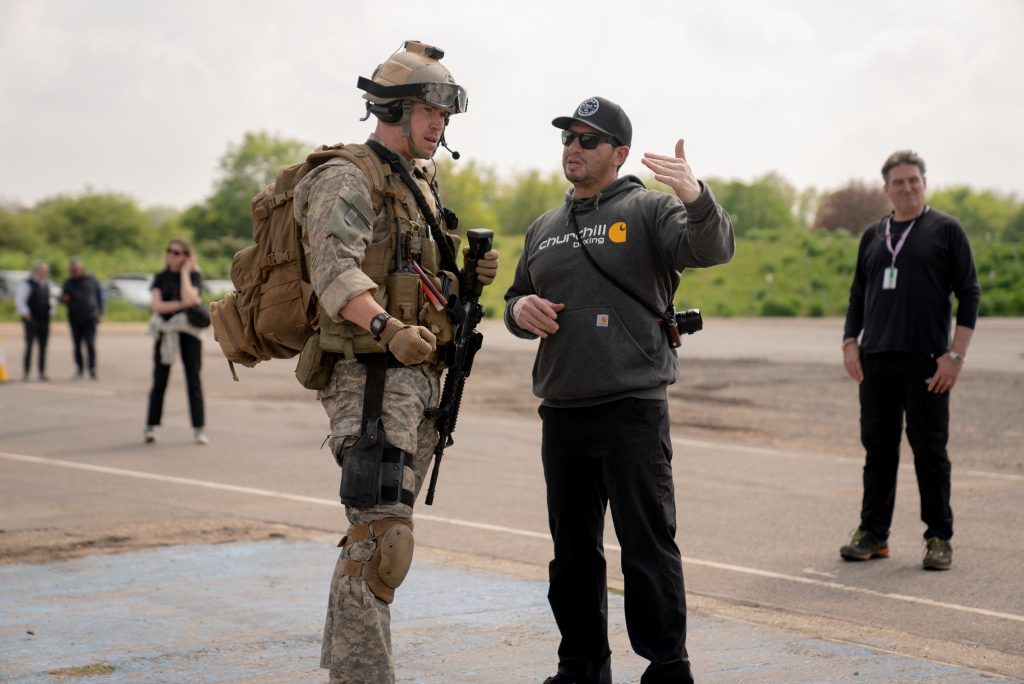
The emotional side of it for me, there was probably one incident which I knew was gonna arrive where a D’Pharaoh pulls Cosmo up the driveway. Elliot was there on set. This incident, that part of the movie, is probably what I dream about the most. And there are different outcomes. Sometimes Elliot is fine, and we’re walking, and we’re laughing. Some would think that’s a great dream, but then you wake up and it’s like it’s actually a nightmare, because it’s not true. So on the day when it happened, I think we got it so right from a sensory standpoint. The lighting was just right. The amount of smoke was just right. The smell. The way it looked.
And Elliot knew I had trouble because in real life he’s huge. He’s built like a weightlifter, like a bowling ball with legs essentially. Strong dude but just big, heavy, and I had a hard time dragging him up this driveway. I thought we were essentially gonna die. I was like, “well, this is where we’re gonna die because we’re vulnerable. I can’t see anything.” I saw that Elliott started to cry a little bit so Elliot can’t speak. So he was crying. I don’t know if you ever heard a little baby, not cry, but like they have these little sounds where they’re sad. That’s what he sounded like, and he started crying. And then I could just feel it, all those 20 years of compartmentalization, pushing it down, you know, delaying the inevitable. Yeah, that monster kind of finally caught me. I called cut, and I had to run off set and just cry for like 10 minutes. And then Alex pretty much had to take over for the rest of the day. That’s how emotional it was for some of us.
That’s powerful.
RM: But it’s therapeutic. I think that was probably the only way that was going to happen. And Elliot and I had a text about it later. I think it was a good moment for both of us to experience together being that I described it so many times.
Kit, you’ve mentioned working directly with the soldier who you were portraying. What did you take away from that experience?
Kit Connor: We only spoke for about an hour on Zoom just before we started the actual rehearsal process, so it was a very early thing for me. It was the first time I’ve been able to do that for a project, so I honestly wasn’t sure how much I would benefit from it. I wasn’t sure how much he would want to share. I wasn’t sure how much hindsight would impact his perception on it. But talking to him and getting his vibe and getting the gist of him a little bit was incredibly useful. As I said, I think one of the most beneficial things was talking to Ray about him and talking to a lot of the other guys who were there and came to set. We got to spend a bunch more time with getting their perspective on the character, on the man himself, was really, really helpful because my experience with a lot of these guys is that they’re very, very humble and often unlikely to give the full story in terms of maybe their heroics or just really what they did. A lot of the time it’s much more objective, and it was really useful to kind of see how his fellow brothers saw him and perceived him. And also they wouldn’t lie. There were moments in the film and in the events that he himself was very, I wouldn’t want to say ashamed of, but I think he may say that. I think he may regret some of his actions or inactions on that day. And yeah, I think I was able to get a very objective and authentic perception of him, both from speaking to him and also from speaking to all the guys involved.
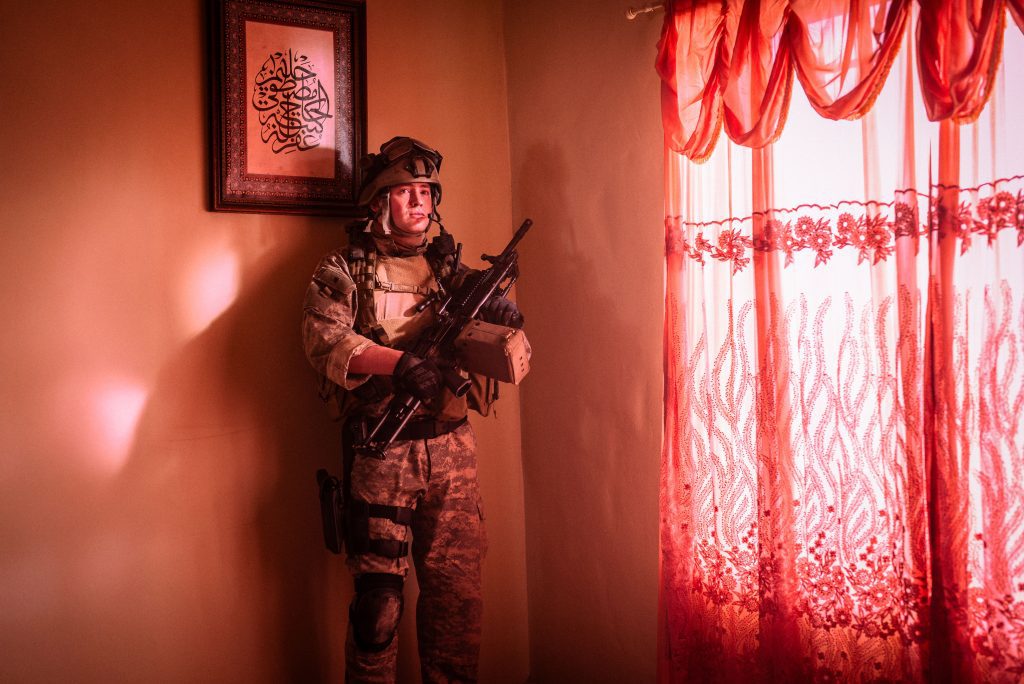
Do you feel an extra pressure to make sure to do this story justice because it’s true and because of the subject matter?
KC: Yeah, in all honesty, coming into this project, really the only level of pressure that I felt in that regard was the fact that I knew that I was going to be playing a real guy. But obviously at that point, all I had done was read the script, so I didn’t know Rey. I didn’t know any of the guys involved. At that point, it was a character, whereas through the process of making it and getting to know some of these guys and hearing more about the story, I think it really made it a lot more. There was a bit more pressure. It meant a lot more to all of us, because I think we actually really cared about a lot of the people that we were portraying. Especially getting to hang out with Elliot. He came and stayed with us for about two weeks. He stayed in our hotel with the cast, and we got to spend a lot of time with him. That made it a lot more real for us.
Ray, you’ve worked on a number of military and combat films and shows. This is your first time directing, so I’m curious to know what was the one aspect that you wanted to make sure was 100% correct?
RM: There’s many but if I had to give you one, I would say the natural what we call lulls. There are peaks and valleys of a gunfight. It’s up and up and up, and then it’s down. So it’s just the pacing and the tempo. You may not know it but when you’re watching it, there’s communication going on but a lot of it’s through looks. We would just kind of predict each other’s minds. A lot of it’s context-based, meaning if you’re in this situation and you do X, like why is that happening? So a lot of it is context-based.
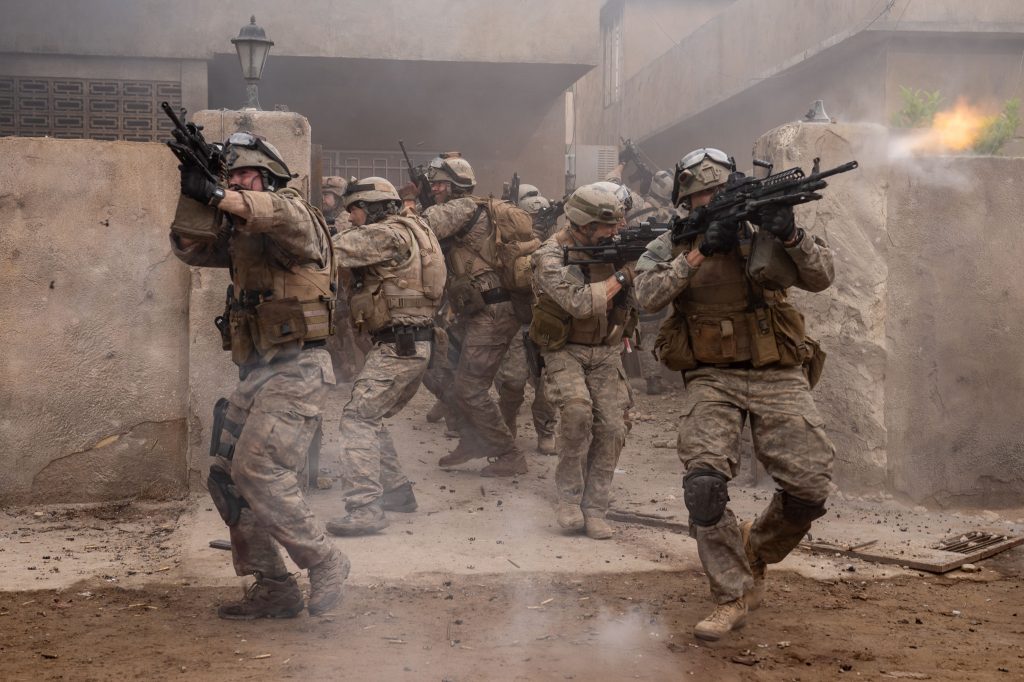
I felt that made the film so much more intense. For me at least, it was during those quiet moments that it was the most intense and, like you mentioned, you could hear that pin drop. It was fantastic in that regard. I want to move on to talking about filming the IED scene. That feels like the crux of the movie. What was that day like on set and getting that right?
RM: Yeah, there’s three parts to it. We had what we call the “actor safe” explosion, then the non-actor safe” explosion. It was done in pieces. So you see Cosmo and Joe Quinn coming out, it’s pretty tight. And kudos to Ryan, the special effects guys are awesome. We did it in two pieces. We wanted a very just snappy and kinetic, a lot of energy. Then there’s the next shot, which is the “non-actor safe” one. So we wanted to go practical. I think there’s so many characteristics or traits to explosives when they go off, and it was an IED, kind of a projected IED, meaning it was directional. So I wanted a lot of the blasts and the kinetic energy really fast, really explosive, really kinetic. There’s some tricks and trades that we had to really bring some three-dimensional components to it. The sound really came in…most of that came in the editing. There’s some supplementary smoke, but a lot of that fill came from the editors, the VFX people.
How was your experience getting to film that scene Kit?
KC: As you said, it was one of the the anchor points of the film in a lot of ways. We all took it incredibly seriously. It was kind of really the one scene in the film where we had stunt guys to do some of the wire pulls and things like that. They did a great job in this. You see a little bit of that in the final cut. I mean, obviously from my character’s perspective, I was there sort of holding security maybe like third or fourth in the row. For me, a lot of it just consisted of just being consumed and being temporarily unconscious and dealing with the shell shock and the concussion after that. That was one of the first pieces of the film I actually saw because I visited Alex and Ray in the editing room, and I think it’s so, so brilliantly done, because you really get to see the different perspectives of all these different guys. Tommy wakes up and kind of has no idea where everyone else is because he was, other than Sam and Elliot, he was the closest to the explosion, so he was kind of knocked back and got up the last. I think it just shows the confusion so well and the fact that everyone’s just consumed by smoke. It’s anxiety inducing.
Warfare is now playing in theaters nationwide.


